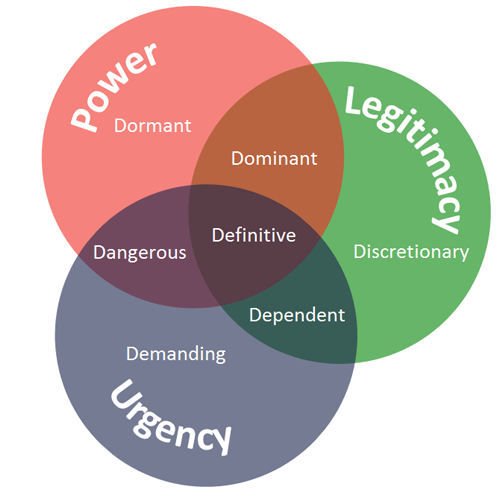"So what?" You may be asking. What is the importance of successful stakeholder engagement in the change environment? In today's change environment it is generally considered that the success of a project relates to the amount of added value (benefits) realised as a result of the change delivered. Who will define what benefits are worth realising? Who will decide if the value has been realised? Whose opinion is critical to confirming success has been achieved? "Our stakeholders" is the answer to these questions. So successful stakeholder engagement becomes a critical success factor as engaged stakeholders will be more accepting of and willing to use the change. This is how we realise that value!
Therefore it follows that we must put significant effort in to effectively engaging our stakeholders. But how do we know who they are, who to focus on and how best to engage them to suit their needs? What a challenge this can be!
One of the most commonly used tools to analyse stakeholders is the Influence/Interest Matrix which provides a 2 dimensional picture of stakeholders and whilst can be of some value has many limitations. A more in depth view of stakeholders can be had with the Salience Model (Mitchell, Agle and Wood, 1997) which adds a third dimension to your understanding as it looks at three separate attributes of a stakeholder:
 Some stakeholders will hold all 3 attributes, some only 2 and some only 1. This leads to the definition of 7 categories of stakeholders (see diagram above), who all have their own opinions and needs and should be engaged differently.
Some stakeholders will hold all 3 attributes, some only 2 and some only 1. This leads to the definition of 7 categories of stakeholders (see diagram above), who all have their own opinions and needs and should be engaged differently.
The more attributes a stakeholder has the greater their priority to us and so the greater attention the project manager should give them. Where would your focus be? Clearly, the Definitive group as they hold all three attributes. Interestingly, a group who often take up so much of the project manager's time and effort is the Demanding category. We can see from the diagram that they only have one attribute, Urgency, so should not be considered a top priority and given so much attention. Understanding these 3 different dimensions and their relationship to each other assists the project manager in defining effective engagement strategies.
As with all stakeholder analysis tools we must, however, be aware of the dynamic nature of the position of stakeholders and review the model as we move through the project timeline and adjust our priorities and engagement activities accordingly.
If you'd like more information or help with stakeholder engagement contact me at FMagee@citi.co.uk
 Fiona Magee
Fiona Magee
Managing Consultant, CITI Limited